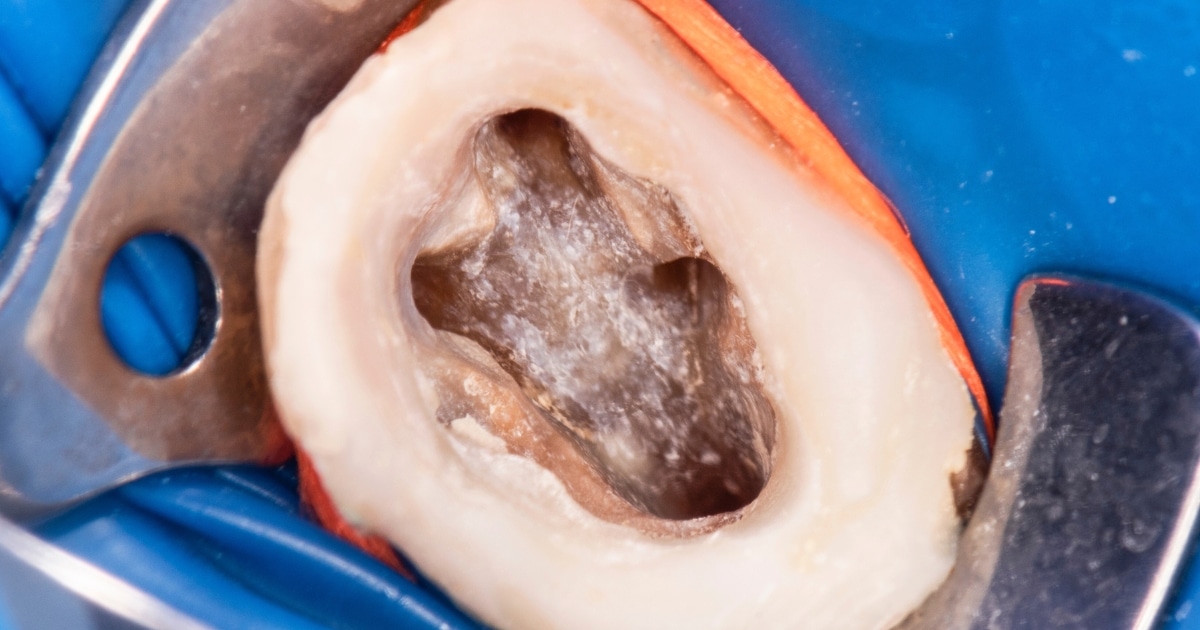Wondering if you need a root canal? This is a common dental procedure to save your infected or severely decayed tooth. This treatment will remove your damaged pulp, clean the canals, and seal the tooth to prevent further infection. Early detection will help you prevent serious complications, including severe pain and even tooth loss.
Read this blog to understand the signs of a potential root canal and how, with timely treatment, you can avoid more extensive dental procedures.
What Sings Indicate That You Might Need a Root Canal?
Here are the warning signs that you might need this treatment:
Constant Pain
One of the most common indicators is persistent tooth pain. If you experience lingering pain while eating or drinking, it could indicate a tooth pulp infection. Over time, the pain can intensify, making it difficult for you to chew or even speak comfortably.
Sensitivity
Are you experiencing a sharp or lingering pain after consuming hot or cold foods? Continuous tooth sensitivity could indicate nerve damage or infection inside the tooth. If the discomfort persists even after removing the hot or cold stimulus, you should consider a root canal.
Swollen Gums
Swelling of gums around a specific tooth could be a sign of infection. You may experience redness and slight pain when touched. In some cases, the swelling can extend to your face and neck, indicating a severe infection. You might need root canals in Staples Mill to heal.
Discolored Tooth
When your tooth becomes dark or disc, it may indicate nerve damage. When the internal tissue of a tooth becomes infected or dies, it can lead to a gray or black appearance. If you notice any unusual discoloration, consult your dentist.
Dental Abscess
A small bump or pimple-like formation on the gums could be called a dental abscess. Abscesses may release pus, causing a foul taste in your mouth. You may experience fever and swollen lymph nodes. If left untreated, it can lead to serious complications.
Cracked Tooth
A cracked or chipped tooth might expose the inner layers of your tooth to bacteria, increasing the risk of infection. A crack can allow bacteria to enter the pulp, leading to inflammation and infection. If left untreated, you might need a root canal.
When to See Your Dentist?
If you experience any symptoms, see your dentist as soon as possible. Early diagnosis and treatment can prevent complications and save your tooth. Ignoring the signs can lead to:
- Increased pain and discomfort.
- Spread of infection to surrounding tissues.
- Tooth loss requires expensive restorative procedures.
Your dentist will thoroughly examine, with X-rays, to determine whether a root canal is necessary.
What to Expect During a Root Canal Procedure?
You might fear root canals due to misconceptions about pain. However, modern dental techniques have made the procedure relatively painless and highly effective. Here’s what you can expect:
- Anesthesia – Your dentist will numb the area to make you feel comfortable.
- Pulp Removal – The dentist will remove your infected pulp. They will clean the canals and disinfect them.
- Filling and Sealing – The dentist will fill the empty canals with a biocompatible material and seal it to prevent reinfection.
- Restoration – A filling or crown will be placed to restore your tooth’s function and appearance.
You might experience mild discomfort after the procedure. It will subside within a few days.
How to Prevent Root Canal Treatment?
To prevent this dental procedure, maintain good oral hygiene and go for regular dental visits. Here are some key tips:
- Brush and floss daily to remove plaque and bacteria.
- Visit your dentist regularly for checkups and cleanings.
- Avoid hard foods that can crack or chip teeth.
- Wear a mouthguard if you grind your teeth at night.
- Treat cavities early to prevent deep decay.
By maintaining proper oral health, you can significantly reduce the risk of needing a root canal.
Conclusion
Recognizing the signs of a potential root canal can help you seek timely dental care and avoid serious complications. If you experience persistent pain, sensitivity, swelling, or any other symptoms mentioned, do not delay visiting your dentist.
Early intervention can save your teeth and prevent further issues.
Noticing any of these symptoms, schedule an appointment with the dentist today!




